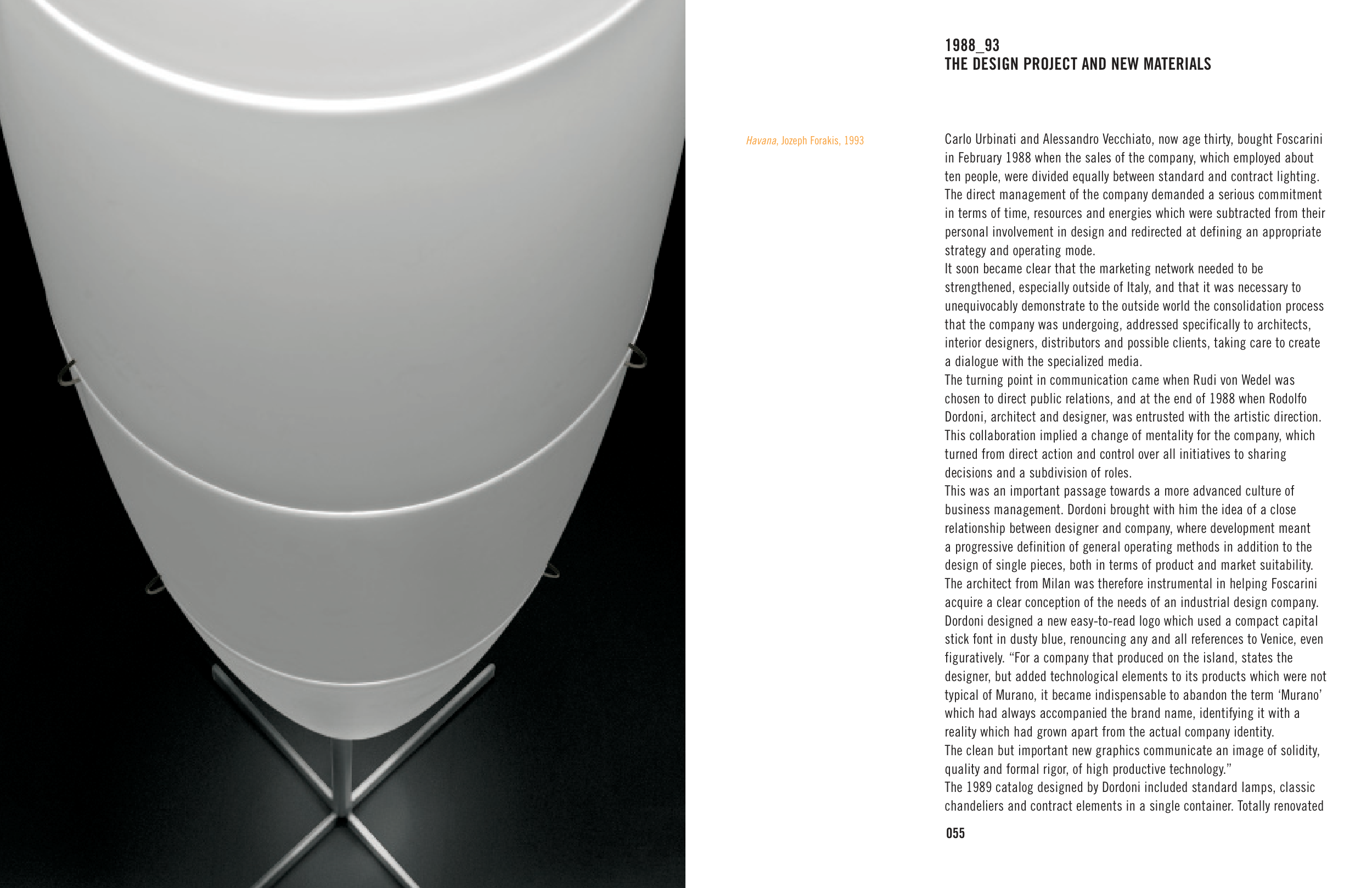055
Havana, Jozeph Forakis, 1993
1988_93
THE DESIGN PROJECT AND NEW MATERIALS
Carlo Urbinati and Alessandro Vecchiato, now age thirty, bought Foscarini
in February 1988 when the sales of the company, which employed about
ten people, were divided equally between standard and contract lighting.
The direct management of the company demanded a serious commitment
in terms of time, resources and energies which were subtracted from their
personal involvement in design and redirected at defining an appropriate
strategy and operating mode.
It soon became clear that the marketing network needed to be
strengthened, especially outside of Italy, and that it was necessary to
unequivocably demonstrate to the outside world the consolidation process
that the company was undergoing, addressed specifically to architects,
interior designers, distributors and possible clients, taking care to create
a dialogue with the specialized media.
The turning point in communication came when Rudi von Wedel was
chosen to direct public relations, and at the end of 1988 when Rodolfo
Dordoni, architect and designer, was entrusted with the artistic direction.
This collaboration implied a change of mentality for the company, which
turned from direct action and control over all initiatives to sharing
decisions and a subdivision of roles.
This was an important passage towards a more advanced culture of
business management. Dordoni brought with him the idea of a close
relationship between designer and company, where development meant
a progressive definition of general operating methods in addition to the
design of single pieces, both in terms of product and market suitability.
The architect from Milan was therefore instrumental in helping Foscarini
acquire a clear conception of the needs of an industrial design company.
Dordoni designed a new easy-to-read logo which used a compact capital
stick font in dusty blue, renouncing any and all references to Venice, even
figuratively. “For a company that produced on the island, states the
designer, but added technological elements to its products which were not
typical of Murano, it became indispensable to abandon the term ‘Murano’
which had always accompanied the brand name, identifying it with a
reality which had grown apart from the actual company identity.
The clean but important new graphics communicate an image of solidity,
quality and formal rigor, of high productive technology.”
The 1989 catalog designed by Dordoni included standard lamps, classic
chandeliers and contract elements in a single container. Totally renovated


